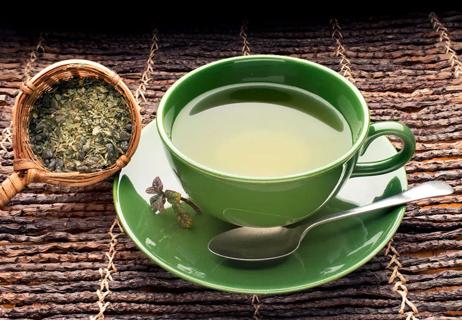Calorie reduction can do more than just help you lose weight — it can also lower age-related inflammation

Cutting back on calories can help you drop a few pounds. But did you know it may also slow common signs of aging?
Advertisement
Cleveland Clinic is a non-profit academic medical center. Advertising on our site helps support our mission. We do not endorse non-Cleveland Clinic products or services. Policy
Research shows a possible link between calories and aging. The 2023 study results support the theory that eating up to 25% fewer calories than a regular diet could tap the brakes on the effects of aging by 2% to 3%. And while this small slowdown in some age-related changes might not seem like a big deal — it is.
“This study showed that a nutritious, calorie-restricted diet seems to reduce inflammation. That’s a big part of aging,” says registered dietitian Beth Czerwony, RD, LD. “So, a key to longevity is decreasing that inflammation.”
And that’s where calorie reduction comes in. But it’s not one-size-fits-all.
U.S. dietary guidelines recommend adults aged 21 and older eat between 1,600 and 3,000 daily calories. Some people fall at the lower end, while others may have to eat more. Your ideal daily caloric intake depends on a lot of things:
And when it comes to cutting calories, even a 10% cut can be a lot for some people. They can feel hungry all the time. Or even not get the vitamins and minerals they need to thrive. That’s why it’s important to have a calorie reduction plan personalized to your needs through a certified professional such as a physician or dietitian.
Advertisement
In the 2023 study, researchers created personalized plans for each participant, with a goal to successfully and safely cut their daily caloric intake by 25%. After two years, participants had, on average, cut their calories by 12%. With this, the researchers still found a notable link between the reduced calories and healthier aging benefits.
Reducing calories appeared to cause changes that slowed or stopped inflammation for some people. Inflammation becomes more common as you age, so reducing calories could help you avoid or minimize age-related inflammation.
The study also showed that eating fewer calories increased metabolism. And most participants were able to maintain their muscle strength even if they lost muscle mass and weight.
Calorie restrictions may also help slow other aging-related changes like heart health and bone density, but more research is needed.
Cutting calories is something almost anyone can do, with expert guidance from your primary care provider and/or a dietitian.
First, talk with your healthcare providers. They can help you figure out how many calories you need and the healthiest way to move forward. Building a game plan focusing on healthy eating and good nutrition is the best way to start cutting calories.
“One of the first questions I ask at the start of any visit is, ‘What do you want to get out of this?’” Czerwony shares. “Are you doing it to lose weight? Reduce inflammation? Improve cognition? Or decrease your chance of having metabolic disease?”
She says it’s important to remember that having overweight or obesity isn’t a weakness. They are real health conditions that demand expert treatment and support. And setting goals is a big start to making lifelong changes to improve your health and extend your life.
Your providers can help you to pinpoint these goals. And help you find achievable ways to achieve them.
These days, everything’s super-sized. So, it’s no wonder you might not be able to figure out how to estimate the best portion sizes. At some restaurants, a main course might have two times more calories than your entire daily goal. Pretty shocking, right?
But that doesn’t mean you can’t enjoy a night out when cutting calories. If you order an entree, ask for a carryout container upfront. Put half (or more) of your order in it before you start eating. Take the rest home to enjoy the next day or two. Or try a salad with a light dressing (like vinegar and oil) and an appetizer (not fried!).
Advertisement
You’ll still want to watch your portions at home. You can overdo it there, too. Avoid piling things on your plate. And pause after eating. This helps your stomach and brain sync, so you can see if you’re still hungry before serving up second helpings.
But don’t be afraid to load your plate with veggies. These nutritional superstars are low in calories and full of filling fiber. You may think you hate them. But it might just come down to how they’re prepared.
Think about the soggy, pale, boiled broccoli your grandmother used to make. It was far from appealing. But when you roast broccoli, Brussels sprouts or squash with spices, it’s a different story. And a delicious one at that.
“You need to get in good with veggies. You can’t live on salads alone,” Czerwony says. “You’ll get bored quickly.”
Cutting calories means more than counting everything you eat until you hit your daily limit. A healthy calorie deficit takes some thought and planning. This can help you get the most nutritional benefits with the fewest calories.
An easy way to do this? Limit foods with empty calories. They pack a calorie punch without any significant nutrition. And your body can store these calories as fat. Some of the usual suspects?
Advertisement
What makes their calories empty? Usually sugar, alcohol or both (we’re looking at you, beer and mimosas!). And let’s not forget about fatty foods like:
Swapping out any of these for healthier choices can help you meet your lower-calorie goal.
A restricted-calorie diet is more than just numbers. What you eat is just as important as how much. Fresh, whole foods rather than processed ones deliver nutritious calories, even if you’re consuming less of them.
“There’s a big difference between eating 1,000 calories of vegetables and eating 1,000 of them in candy bars,” Czerwony states.
Swapping high-calorie noshes for leaner, nutrient-packed ones is a good strategy. But that doesn’t mean you must completely give up on some of the things you love.
Ask yourself, what are things that you can trim rather than eliminate? It’s not all or nothing. There’s a whole psychology of eating.
“If you give up things you love, you can find yourself doing negative self-talk. You may feel bad about something you ate and feel bad about yourself,” Czerwony warns. “That’s a problem when you deprive yourself.”
Advertisement
So, substitute. If you like salty, crunchy snacks, try air-popped popcorn instead of chips. Add zesty seasoning instead of butter. It will taste just as good, if not better.
Do you find yourself reaching for cereal in the morning? Or a toasted bagel slathered in cream cheese? Sure, they taste great. But you’ll fill up on empty calories rather than ideal nutrition.
Instead, why not try tasty nonfat yogurt, fruit and nuts like almonds or walnuts? Or butter-free scrambled eggs along with low-fat cottage cheese and berries. You’ll have fewer calories and more protein and fiber on your plate. And you’ll likely feel fuller longer.
Restaurant meals aren’t the only ones with caloric pitfalls. You can derail even the best calorie-cutting intentions at home, too. When it comes to making meals, focus on healthier ways to cook:
Czerwony recommends adopting the Mediterranean diet. It can help you cut calories without sacrificing nutrition. But it’s more than a “diet.” You get a way to eat better for a healthier heart and less inflammation — along with other aging-related health conditions. And you avoid restrictive numbers or formulas.
This flexible way of eating allows you to personalize meals with:
There’s been a lot of chatter on social media about intermittent fasting over the past few years. And for many, it’s proven to be a good way to cut calories and lose weight. You may think it involves starving yourself for long periods. That’s not how it works.
Instead, you eat only during set hours each day, like 9 a.m. to 7 p.m. Or you may choose to do it only a few times a week. A dietitian can help you find the best plan for your needs and lifestyle.
It’s important to remember there’s no quick fix for improving your diet and reducing calories. It takes planning and time. And it helps to have support along the way. Czerwony says she’ll be the first to tell you that.
“You can adopt many different ways to cut calories,” she says. “But it’s important to look closely at what you’re eating before you make any changes. And that may mean getting help from a dietitian or your primary care provider.”
These providers can:
Having this kind of support tends to make a restricted-calorie lifestyle easier than going it alone. Remember, change won’t happen overnight. It can take months or years for there to be noticeable results when it comes to healthier aging.
And while the evidence suggests calorie reduction can slow aging, there’s more to better eating than that. The right eating strategy sets you up for a healthier life now — and well into the future.
Learn more about our editorial process.
Advertisement

Your metabolism may torch 1,300 to 2,000 calories daily with no activity

It depends on factors like your age, activity level and if you want to maintain, lose or gain weight

EVOO is full of antioxidants and has anti-inflammatory properties, both of which aid your body in multiple ways

Jump into the swing of things to improve your coordination, burn calories and get your heart rate going

An ice bath can ease sore muscles and decrease inflammation after a workout

An enzyme deficiency or rosacea may be behind the facial flush

Adjusting your diet can help fight inflammation

Foods and supplements that support your body

Type 2 diabetes isn’t inevitable with these dietary changes

Applying a hot or cold compress can help with pain